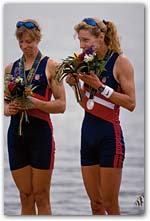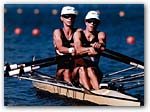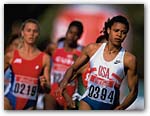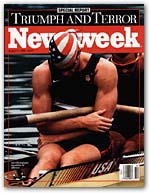Main Menu · Search ·Current Issue ·Contact ·Archives ·Centennial ·Letters to the Editor ·FAQs
![]()
 |
| Lindsay Burns '87 (left) won silver in Atlanta. |
 |
| Burns strained for the finish. |
 |
| Rainey ran through the 800 meter semifinals. |
 |
| Holland made Newsweek's cover. |